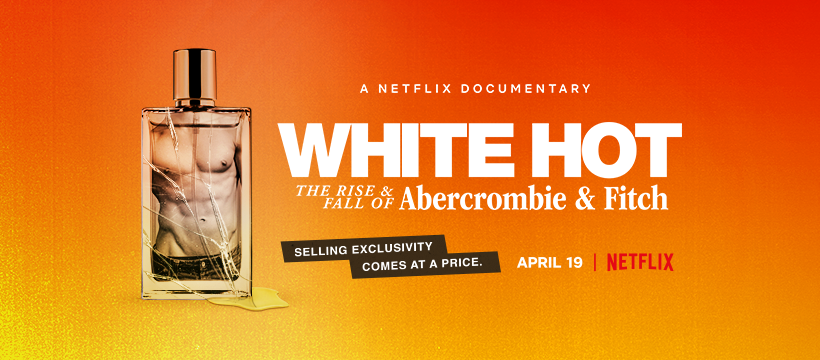
Abercrombie + FItch Case study
The ask
The task at hand was to analyze if it is unethical for a brand to be exclusive based off the documentary on Netflix called “White Hot: The Rise and Fall of Abercrombie and Fitch.” I provided a comprehensive analysis of Abercrombie & Fitch, covering its past, operations, and the leadership era of Michael Jeffries. I also assessed the cultural and ethical challenges the company faced under Jeffries’ leadership, including HR violations, exclusionary marketing, and societal impacts on body image and status. Finally, an evaluation A&F’s current state was completed, contrasting its merchandise, culture, and store aesthetics with the Jeffries era, and propose solutions for addressing past controversies and ensuring a more inclusive future.
Exclusive marketing
As a result of his actions, Jeffries was excluding anyone who did not fit in his ideal ‘image’. He promoted Abercrombie’s clothing to skinny people who were good looking in his opinions which spiked controversy as those who did not fit this standard were not promoted to shop this brand. Not only did Jeffries exclude customers based on their looks, but he also relied on sexualized marketing for the target market. Abercrombie was using sexualized marketing tactics that included shirtless men on their advertisements, shopping bags, and gift cards. (Sirera, 2015)
This marketing strategy created a sexual environment surrounding Abercrombie and Jeffries was exposing young men and women for these advertisements. Using naked boys and females who were wearing only a bathing suit in their marketing also proposed unrealistic beauty standards to their customers.
Courtesy of E News!
Profit vs. Ethics
When Jeffries began his position as CEO at Abercrombie, the sales of the company skyrocketed through his new approach of bringing sexualized marketing tactics and promoting the brand to be exclusive. The reflection of this new approach led to an increase in sales from “from $165 million in 1994 to $1.04 billion five years later,” after Jeffries was hired. (Lamare, 2022) Although Jeffries was able to create an influx of sales for the brand, the negative impact of his actions to do so were unethical and left permanent damage on the company’s image and on any new customers or partnerships. In my opinion, Jeffries is not to be excused for his actions of staying on the status quo for the company. By the decisions that he made, it left an impression on the company that can never be changed and may never be forgiven.
Courtesy of Globenewswire.
Courtesy of LA times
Impact on employees and Investors
The majority of the employees felt embarrassed to be a part of the company under Jeffries and were also facing discriminatory acts by Jeffries. From Canada Weekly, “the plaintiffs said the company hired predominately white people and kept workers of color off the sales floor, designating them to stock-room and cleaning jobs.” (Hensley, 2022) Not only did Jeffries' decisions impact the customers, but it also reflected into his employees and created a toxic work environment. Jeffries’ actions were impacting the partnerships with investors as the investors were not wanting to associate with the brand due to Jeffries’ controversial decisions and his management style.
Courtesy of Reappropriate.
Final Thoughts
From recent travels to Abercrombie, there has been significant change in their culture and their marketing strategies. From visiting a store, the aesthetic is more clean and appeals to customers of all ages and sizes. Their inclusivity is seen by appealing to different aesthetics through their garments and the sizes of clothing have a more inclusive variety. On the app and in person, there are models that are diverse and include those that are a different race, gender, sexuality, and size. The store is very different from what Jeffries left for the future, it now appeals to a larger target market by including instead of excluding customers.
The outcome
The outcome of the analysis focused on whether it is unethical for a brand to be exclusive, using Abercrombie & Fitch as a case study. I provided an in-depth examination of the brand's history, operations, and the leadership of Michael Jeffries, highlighting the cultural and ethical challenges faced during his tenure, including HR violations, exclusionary marketing, and negative societal impacts on body image and status. The analysis concluded with an evaluation of Abercrombie & Fitch's current state, comparing its present-day merchandise, culture, and store aesthetics to the exclusionary practices of the past. I proposed actionable solutions for the brand to address its past controversies and move toward a more inclusive and ethical future.
The analysis required the use of critical thinking, research, and ethical evaluation skills to assess the historical and cultural implications of Abercrombie & Fitch's practices, as well as strategic problem-solving to propose solutions for a more inclusive future.




